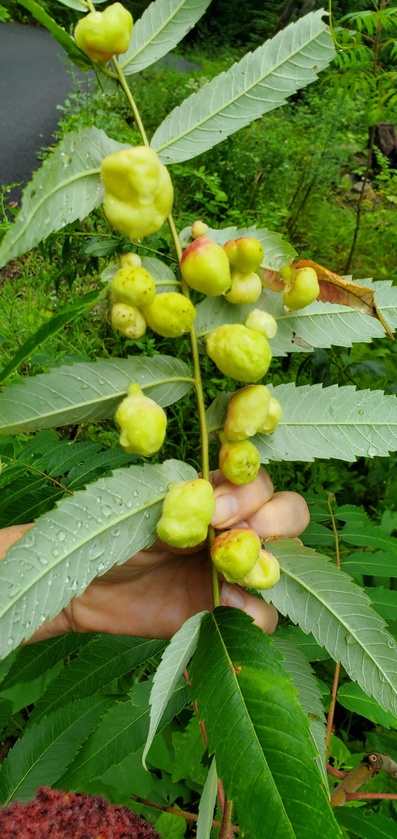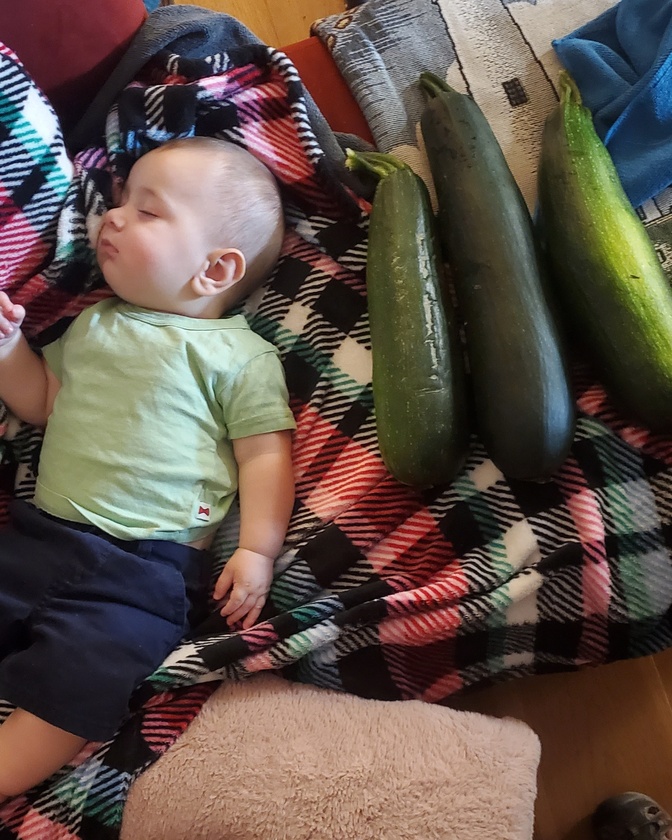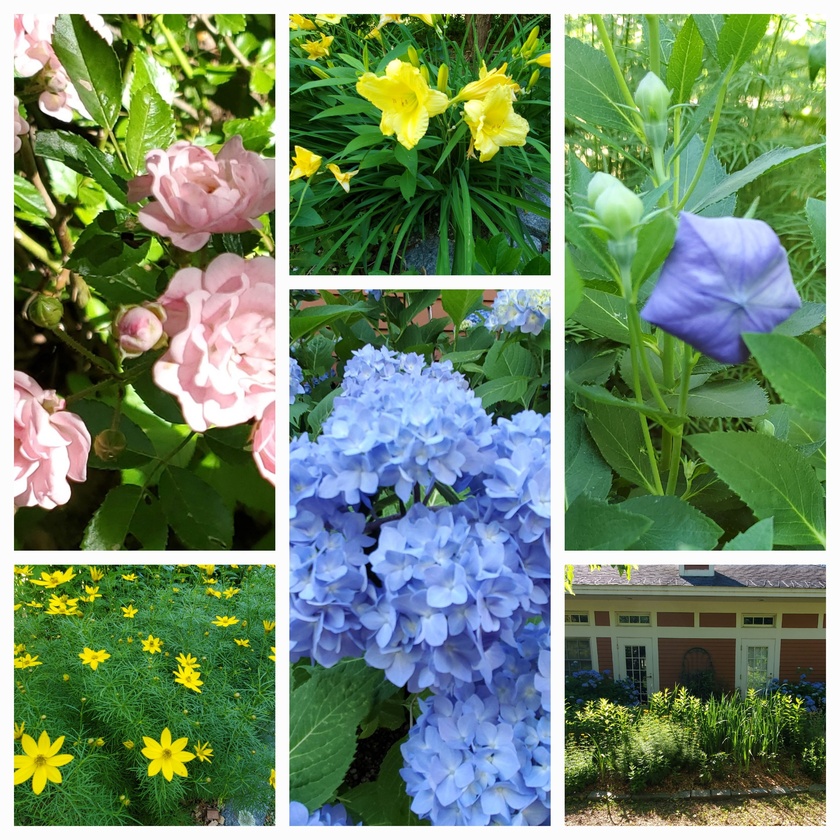I love putting plants in my house windows(78 of them!) but sometimes the conditions don't allow for a plant to thrive or even survive. This particular window has a plain, sheer drape that I keep drawn, which not only diffuses the indirect light coming from the North, but produces a backdrop that begs for a bit of decor.
For the stems, I used a lovely floral fabric that gave me the starting point for colors and inspiration for leaf/flower shapes. From that fabric I cut a variety of length strips, all at 2" wide. With right sides together, I sewed tubes, turned them right side out, fed first a piece of 3/8" rope piping, then a length of wire through. Using an assortment of felt scraps, I cut out a variety of leaves and flowers and sewed them onto the stems. Even though each stem is unique, the brown, wool yarn vein detailing, and pairing of colors, provides cohesive elements to tie them together.
An old copper kettle makes a darling plant pot and coordinates nicely color-wise. I weighted each stem into the pot with some throwaway wrenches from my patio set build. It makes for an artistic, soft sculpture plant that will always look great - and never needs to be watered!
Hope this inspires and if you make version, please share!
There are a lot of expressions that we hear now and then; most we think we know the origin of, some we don't. For the most part we just don't ponder the origin of commonplace expressions because they are... common. The first thing I discovered when beginning to read this little gem of a book, was not only hadn't I considered where many common sayings come from, but my preconceived idea of their origin was actually wrong! Kinda embarrassing, but guessing I may not be alone in this. I thought it would be of value then to share some tidbits from this book. Audio format is nice, as you can multitask while listening to this. This is my first attempt at recording reading a book, so any constructive criticism is welcome!
There are a lot of expressions that we hear now and then; most we think we know the origin of, some we don't. For the most part we just don't ponder the origin of commonplace expressions because they are... common. The first thing I discovered when beginning to read this little gem of a book, was not only hadn't I considered where many common sayings come from, but my preconceived idea of their origin was actually wrong! Kinda embarrassing, but guessing I may not be alone in this. I thought it would be of value then to share some tidbits from this book. Audio format is nice, as you can multitask while listening to this. This is my first attempt at recording reading a book, so any constructive criticism is welcome!
There are a lot of expressions that we hear now and then; most we think we know the origin of, some we don't. For the most part we just don't ponder the origin of commonplace expressions because they are... common. The first thing I discovered when beginning to read this little gem of a book, was not only hadn't I considered where many common sayings come from, but my preconceived idea of their origin was actually wrong! Kinda embarrassing, but guessing I may not be alone in this. I thought it would be of value then to share some tidbits from this book. Audio format is nice, as you can multitask while listening to this. This is my first attempt at recording reading a book, so any constructive criticism is welcome!
Cool! I've never noticed galls on staghorn sumac. Location: SE NH.
Melaphis rhois on Rhus typhina
https://bygl.osu.edu/node/1112


















